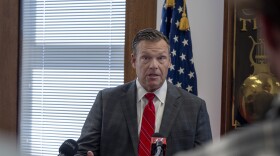Suppose you were plucked from wherever you are now and plopped into a foreign country where you were told you are perfectly free. You are allowed to say anything you want, worship any god you want, speak any language you want, and make your living in any way you can. The only catch is, your neighbors don't agree. In such a scenario, are you really free?
This hypothetical situation is not exactly what German-Americans faced during World War I, but it still may help us understand what their story tells us not only about their freedom but also our own.
As Erik Kirschbaum reveals in his new book Burning Beethoven: The Eradication of German Culture in the United States during World War I, German-Americans prior to the war built a vibrant network of homes, churches, and communities that made them a major part of the tapestry of peoples called America. But during the war, everything German fell out of favor in the United States, and they found themselves a people between two countries.
Consider, for example, the use of the German language in daily life. Prior to the war, as I've mentioned previously, it was not difficult to find American communities where German was used more than English, and in some neighborhoods, you still can find German signs on old buildings. But when the United States entered World War I in 1917, speaking German actually became a punishable offense in some areas. In 1918, for example, the governor of Iowa issued a proclamation banning all foreign language from the state, and when four Iowa women spoke German over the telephone, they found out he wasn't kidding and were fined.
Teaching German was even more verboten. Prior to the war, German was the most studied non-English language in the United States. During the war, that was mostly wiped out. University after university shut down its German language program, and the largest public school system in the country, the New York City system, stopped teaching German at the elementary level. It even fired any teachers who didn't support the war on the grounds that they were a bad influence on children. America's most zealous anti-German activists looked forward to the day when German became a "dead language" spoken by no living person anywhere on earth.
The worst thing German speakers suffered, of course, was violence. Kirschbaum discovered reports of German-Americans being tarred and feathered in thirteen states, including Kansas, and more than one of those incidents ended with the victim's death. In Ashland, Wisconsin, a professor of modern languages was tarred and feathered because he was teaching the language of the enemy, and in Elk City, Oklahoma, a preacher was tarred and feathered for preaching peace and questioning Woodrow Wilson's judgment. Kirschbaum began his book with an especially horrific tale -- that of Robert Paul Prager, a German-American coal miner who was lynched in 1918.
With these stories in mind, let's go back to the hypothetical scenario with which I began my remarks. You are told you are free, but your neighbors don't agree. I suggest you'll be disappointed. The story of German-Americans during World War I reminds us that wherever we locate the source of our freedom, the practice of it requires the cooperation of others. It is one thing to be free in theory, another to be free in practice. In a real sense, freedom is not something we claim for ourselves but something we give each to other.







